Global trade depends on the movement of goods across international borders, which gives consumers and businesses access to various goods and resources. Effective goods transportation between major economic hubs, like China and the USA, promotes economic growth and development.
Millions of people have undoubtedly been daydreaming about this business plan: import the appropriate Chinese goods and resell them to different US markets. Despite the ease with which product suppliers can be located on Alibaba, many people abandon this business plan due to their ignorance of the procedures and expenses involved in shipping goods from China to the United States. Our top goal in this blog is to provide you with all the information possible about shipping from China to the United States.
Chapter 1. Time Details For Shipping From China To USA
1. Air Freight
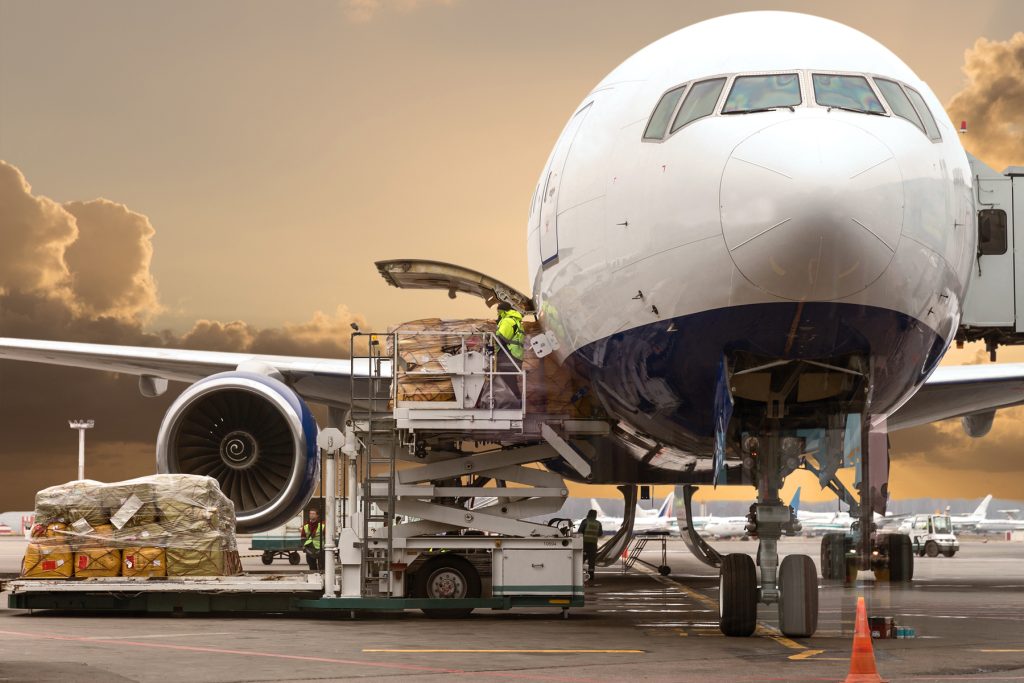
The quickest method of shipping goods from China to the USA is air freight, which typically takes two to seven days. This is an excellent way to ship valuable or urgently needed things.
The first step in the air freight procedure is to pick up the items and get them ready for shipment, which usually takes one to two days. Particularly if it’s a straight route, the actual flight typically lasts around a day.
The time frame is extended by one to four days for local delivery and import handling after landing. Air freight times are subject to various circumstances.
Multiple-stop flights take more time, while direct flights complete the task faster. Another crucial factor is how quickly customs clears the items; hold-ups here might cause the process to lag.
Another factor to consider is the weather, as inclement weather might result in flight delays or cancellations. Even while air freight is frequently more expensive than other shipping choices, it’s still a good option for anyone wanting a rapid delivery despite these possible difficulties.
2. Sea Freight

Shipping from China to the USA by sea freight is less expensive, but it takes longer—usually 15 to 40 days. For huge shipments that don’t need to arrive right away, this is the best alternative.
The first step in the marine freight procedure is port handling, which takes three to seven days and includes packaging the products into containers and loading them aboard the ship.
The ship then makes its way across the ocean, a voyage that, depending on the route, might take anywhere from 15 to 30 days. It may require an additional two to seven days to unload and clear the cargo through customs after the ship arrives.
Sea freight delays can be affected by several things. Loading and unloading might be delayed by port congestion, particularly during peak seasons. Another consideration is the shipping route selected; direct routes are faster than routes requiring many stops.
Time can also be added by quarantine and customs inspections, particularly if the rules are stringent. While sea freight is the least expensive alternative for large shipments, it is not a good choice for last-minute deliveries due to its lengthy transit durations.
3. Express Shipping (Courier Services)

delivery man holding pile of cardboard boxes in front. copy space
The fastest shipping option from China to the USA is express shipping, which takes one to five days to arrive and is provided by UPS, DHL, and FedEx. For high-value things that need to be sent quickly, little packages, or urgent documents, this technique is perfect.
Pick-up, air transportation, customs clearance, and final delivery are all included in the expedited procedure of express shipping, which is frequently done door-to-door for added convenience.
Express shipping’s speed is determined by a few important criteria. It is crucial to select the appropriate service level; regular services take a little longer, while premium alternatives might deliver within 24 to 48 hours.
Because courier services are so effective, customs clearance is typically completed quickly. On the other hand, delivery times may increase if the destination is far away. When speed and dependability are your primary concerns, express shipping—while more expensive—is a worthwhile investment.
Chapter 2. 5 Things You Must Know Before Shipping from China to USA
1. Type of Cargo
The time it takes to send something from China to the USA depends a lot on the kind of product you are shipping. For example, more care must be taken when sending fragile or hazardous commodities, which may increase the shipment time.
These products frequently require unique handling, packing, and documentation, all of which prolong the process. Strict international standards must be followed for hazardous chemicals, which may need thorough inspections and approvals, further delaying shipment.
Conversely, fragile goods need to be handled and packed carefully to prevent damage during shipment. If your shipment contains these kinds of items, you should plan ahead of time because the requirement for such careful preparation can cause the process to drag out.
It’s critical to comprehend the particular criteria for your cargo type to prevent unforeseen delays and guarantee on-time delivery.
2. Shipment Volume
The amount of your package might significantly impact how long it takes to ship from China to the USA. Logistical difficulties may arise with large shipments, particularly ones that call for several containers, which could cause delays.
Because container space is typically limited, especially during busy times of the year, your shipment may be split up into multiple batches. Processing every batch independently could result in higher shipping delays overall.
Larger volumes also require more time to load, secure, and unload, which adds time to the transit time. Coordination with your shipping provider is necessary to manage large shipments properly.
This will guarantee that container space is available and that the goods are treated with care. Delays in processing high volumes may disrupt your supply chain, so meticulous preparation is essential to keep things running smoothly.
3. Source Location of the Cargo

The overall shipping time from China to the USA depends largely on the origin of your items. Should your products be customized or made-to-order, the production lead time needs to be taken into account when calculating the total shipment time.
Because custom items usually take longer to make than off-the-shelf ones, they might not be ready for distribution as soon. Furthermore, it can take longer to get the items to the port for export if they are made in a remote location.
This is particularly true in areas with poor infrastructure, where there may be fewer or slower transit options. When organizing your shipment, it’s critical to take into consideration both the manufacturing and transportation schedules as both variables might have a substantial impact on the total delivery time.
4. Final Delivery Destination

One of the most important aspects of the shipping schedule from China is the final delivery destination, which is the USA. The delivery time will increase with the distance to the destination, particularly if there are several stops along the way or if there are fewer direct routes.
Shipments typically reach urban areas with extensive infrastructure more quickly than they do distant or rural areas. Delivering to a distant inland area usually takes longer than shipping to a large metropolis on the East or West Coast.
The shipping route used is important as well; certain routes may be more prone to traffic jams or delays, especially during busy shipping seasons or inclement weather. It’s crucial to take these things into account when organizing your shipping to make sure your items arrive at their destination on schedule.
5. Transport Schedules and Availability
The speed at which items can be sent from China to the USA is largely determined by transportation schedules and the availability of shipping choices. The shipping time is directly impacted by the number of ships or planes that depart for the United States.
There may be fewer shipping alternatives available during busy times, like the holidays or right before important trade events, which could cause delays. Another important consideration is the amount of cargo space that these ships or planes have available.
Your package may be delayed until the next available transport if there is a shortage of space. Working together with a reputable freight company like Airsupply might help to resolve these problems.
Even in peak shipping seasons, a reliable carrier with solid industry ties can frequently reserve the essential cargo space, guaranteeing that your package will arrive on schedule. Managing shipment schedules and preventing delays can be greatly aided by having a solid rapport with your carrier.
Chapter 3. Guidelines and Regulations for Customs and Import When Shipping
1. Compliance and Penalties

It is essential to follow customs laws while shipping goods from China to the United States. Serious consequences, such as large fines or even the detention of your products, may follow noncompliance.
Importers must make sure that their shipments comply with all legal specifications, including correct import limits, appropriate documentation, and accurate declarations. In addition to upsetting the supply chain, noncompliance can have long-term repercussions like losing import rights or being sued.
Because US customs officials enforce laws strictly, importers need to be informed of any modifications to the requirements. Additionally, if there are disagreements during customs clearance, importers need to be informed of the appeals and reimbursement procedure.
Importers have the right to file an appeal and ask for an investigation of the situation if a shipment is detained or fined. This procedure offers a means of resolving problems and maybe recovering expenses, but it necessitates careful documentation and a comprehension of the rules.
To manage these intricacies, importers should proactively collaborate with customs brokers or legal professionals to guarantee complete compliance and reduce risks throughout the import procedure.
2. Documentation for Dangerous Goods

Careful attention to documentation is necessary when shipping hazardous materials from China to the United States. These goods, which can include flammable materials, explosives, or dangerous chemicals, have to follow stringent international shipping laws.
For such commodities to be transported safely, proper labeling, packaging, and documentation are necessary. The commodities’ hazardous categories, thorough descriptions, and the safety measures needed for handling and transportation must all be included in this paperwork.
The guidelines for these shipments are provided by the International Air Transport Association (IATA) regulations and the International Maritime Dangerous Goods (IMDG) Code, which outlines the required paperwork and safety precautions.
There are harsh consequences for breaking these rules, such as fines, delayed shipments, or even having products seized. A Safety Data Sheet (SDS), which describes the hazardous qualities of the goods, handling guidelines, and emergency procedures in the event of an accident, must also be provided by the shipper.
These records will be closely examined by US Customs officials to make sure all safety procedures are being followed. To avoid any delays during shipping, importers and exporters must collaborate closely with freight forwarders and carriers to guarantee that all documentation about risky items is correct and comprehensive.
3. Customs Inspection and Clearance
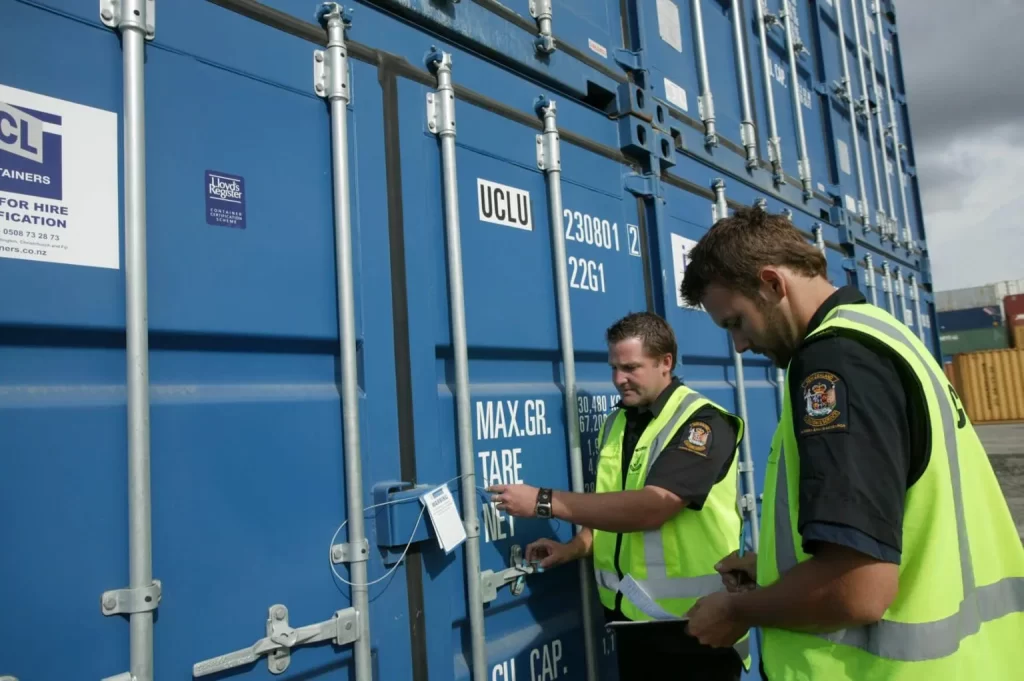
Important steps in the shipping procedure from China to the USA include customs inspection and clearance. These processes guarantee that imported products abide by all laws, including safety requirements, import limitations, and levies.
Shipments are subjected to comprehensive scrutiny by customs officers upon arrival in the USA. To verify the contents and value of the items, this process may entail physical examination, x-ray scanning, or other techniques.
Finding any differences between the declared information and the actual shipment is the aim of this inspection. Should any problems be discovered, the cargo can be delayed and even subject to fines while it is kept for additional examination.
Importers need to make sure that all paperwork is precise and comprehensive to facilitate a seamless customs clearance process.
Importers need to make sure that all paperwork is precise and comprehensive to facilitate a seamless customs clearance process. This covers the Commercial Invoice, Bill of Lading, and any other necessary paperwork, like the Entry Summary (CBP Form 3461).
To confirm the validity of the shipment, customs may occasionally ask for extra paperwork, such as confirmation of payment or certifications of origin. To minimize needless delays or fines, importers should collaborate closely with customs brokers and be ready for these inspections.
This will help them negotiate the clearing procedure quickly.
5. Shipping Bill and Customs Regulations
An essential document for international trade, the shipping bill forms the basis of customs laws when goods are shipped from China to the United States.
This document contains comprehensive details on the shipment, such as the contents, origin, destination, and carriage terms. It acts as a formal contract between the shipper and carrier and is necessary for getting goods past customs.
To prevent delays or fines, the shipping bill must be correct and adhere to Chinese and US customs laws. The shipping bill is used by customs officials to confirm cargo data and make sure all legal criteria are fulfilled.
Inconsistencies between the shipment’s actual contents and the transportation bill may result in delays, fines, or inspections by customs.
As such, this document must be carefully produced and evaluated before submission. To guarantee uniformity and compliance, the shipping bill must also line up with other documents, such as the commercial invoice and bill of lading. Exporters should collaborate closely with customs brokers and carriers in preparing and submitting the shipping bill.
6. Bill of Lading and Commercial Invoice
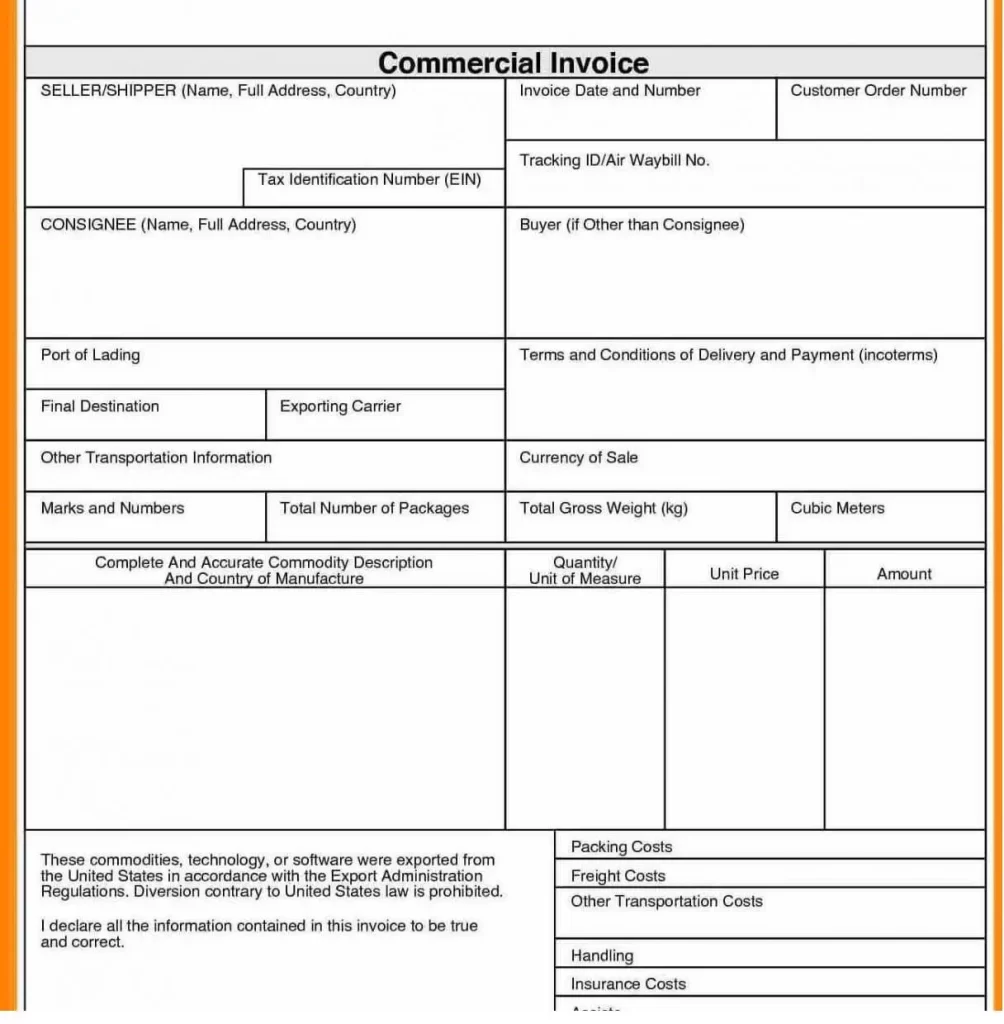
Especially when sending goods from China to the USA, the Bill of Lading (BOL) and Commercial Invoice are two of the most crucial documents in international shipping.
The Bill of Lading is a legal document that outlines the rules of transportation and acts as a receipt for the items that have been sent. It is an essential document for customs clearance since it contains information about the contents, origin, destination, and ownership of the items.
Contrarily, the Commercial Invoice is a formal record that attests to the transaction between the buyer and seller. It contains details on the product, including its description, amount, value, and place of origin. For customs officials to determine the import items’ duties and taxes, this document is crucial.
7. Certificate of Origin and Customs Clearance
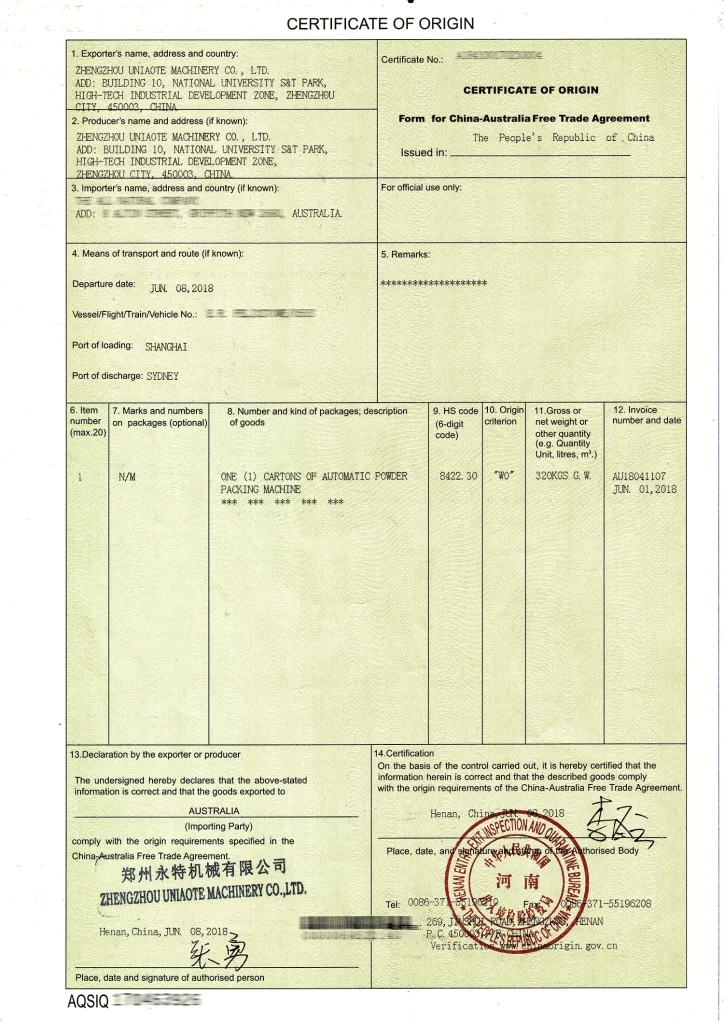
When transporting goods from China to the USA. The Certificate of Origin (COO) is an essential document in the customs clearing process. This document attests to the fact that all of the materials used to manufacture, produce. Process the items found in the designated nation.
In free trade agreements, like the trade accords between the United States and China. The allegation of preferential tariff treatment is frequently made by the COO. To make sure that the items are eligible for reduced or no tariffs. This paperwork needs to be accurate and completed correctly.
The Certificate of Origin is used by customs officials to confirm the products’ origin and calculate any applicable tariffs and taxes. The shipment can be delayed or the importer might have to pay extra duties if the COO is absent or wrong.
To support the COO, extra paperwork, like a certificate of origin or manufacturer’s declaration. ould be needed in some circumstances. Importers must collaborate closely with their suppliers.
Customs brokers to guarantee accurate preparation and submission of the Certificate of Origin together with the cargo. This guarantees that the products pass through customs without incident and take advantage of any applicable tariff breaks.
Chapter 4. Economical and Effective Shipping Options from China to the United States
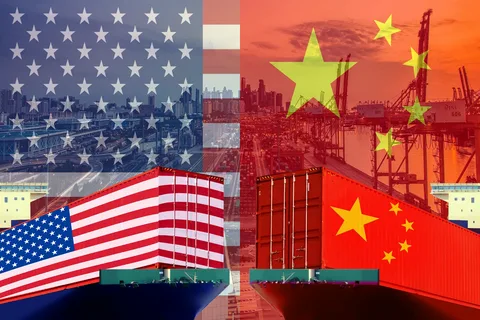
When importing goods from China to the US, companies seeking to cut expenses and increase productivity must select the best delivery option. With so many options at your disposal, knowing the best approaches can help you make well-informed choices.
In this Chapter, we’ll examine two well-liked techniques: Sea Freight and UPS Combined (SFUC) and Air Freight and UPS Combined (AFUC). We’ll also compare express shipping options and look at small parcel costs.
1. Effective Shipping Strategies: SFUC & AFUC
For individuals who wish to strike a compromise between price and delivery time, Sea Freight and UPS Combined (SFUC) is the perfect option. With SFUC, your items are shipped by sea freight to a port in the United States, and then UPS makes the last delivery.
Larger cargoes, when sea freight offers a cheaper cost per unit, benefit most from this strategy. UPS guarantees a prompt and dependable last-mile delivery, serving every area of the country, once the package reaches the U.S. port.
For companies that need to minimize shipping costs without sacrificing delivery date. SFUC is an excellent option because it combines the dependability of UPS with the affordability of sea freight.
Conversely, Air Freight and UPS Combined (AFUC) serve customers that need expedited delivery schedules. Similar in operation to SFUC, AFUC employs air freight as opposed to sea freight.
After your items are flown to the United States, UPS handles the last portion of the voyage. Shipments that need to be delivered faster than conventional air freight services. But isn’t big enough to justify sea freight are the ones that benefit most from this option. Although AFUC is a little more costly than SFUC, it provides substantial transit time savings.
2. Selecting the Best Express Shipping Service

Businesses that value speed over cost frequently go for express shipment. The effectiveness of customs clearance, pricing, and dependability are crucial factors to take into account when choosing an expedited shipping service from China to the US.
Of the three leading competitors, FedEx, UPS, and DHL, FedEx and UPS tend to be the most notable. FedEx is a favored choice for urgent delivery because of its extensive network and quick customs clearance procedures. Particularly for large and expensive packages, UPS provides effective delivery services at reasonable prices.
Despite its reputation, DHL occasionally takes longer than FedEx and UPS to clear customs. Furthermore, DHL’s prices may increase, especially during busy times of the year. For real-time prices and discounts, it’s best to speak with your freight forwarder or supplier as these can change on a weekly basis.
3. Cost Analysis for Small Parcel Shipments
Cost is an important factor to take into account when sending small packages from China to the United States. Because they are reasonably priced, services like Epacket and China Post are well-liked for smaller things.
For packages up to 2 kg, Epacket is frequently utilized since it provides a fair trade-off between price and delivery time. Depending on the US destination, delivery usually takes between 7 and 20 days. Because of its tracking features and affordable price, e-commerce sellers particularly like Epacket.
Another affordable choice for slightly heavier or thicker small goods is China Post. China Post’s small parcel service is a great option for non-urgent delivery. Even if it is slower than Epacket and has a substantial cost advantag
The duration of delivery may vary between 15 and 45 days, contingent upon the particular service level selected.
Chapter 5. FAQs about Shipping from China to USA
Air freight is the most expedient shipping method from China to the USA. The quickest delivery, usually taking two to five days, is provided by direct flights between major cities in the USA, such as Los Angeles or New York, and China, such as Shanghai or Shenzhen. Express air services can even shorten transit times for shipments that need to get there quickly. The length of time, however, varies depending on things like weather and customs clearance.
Conclusion
It takes careful planning to navigate the complexity of shipping from China to the USA. Taking into account several variables such as cost-effectiveness, customs laws, and shipping methods. When deciding between quick shipping and less expensive methods like air or sea freight. It’s important to know how dimensions weight, customs charges, and laws affect your shipment.
At AsianDavinci Sourcing, we’re committed to making this process easier. We do this by using our experience to guarantee seamless. Reasonably priced shipping solutions that are customized to meet your demands. We assist in streamlining your import processes and increasing accessibility. Effectiveness of international trade by offering thorough support and current information.
